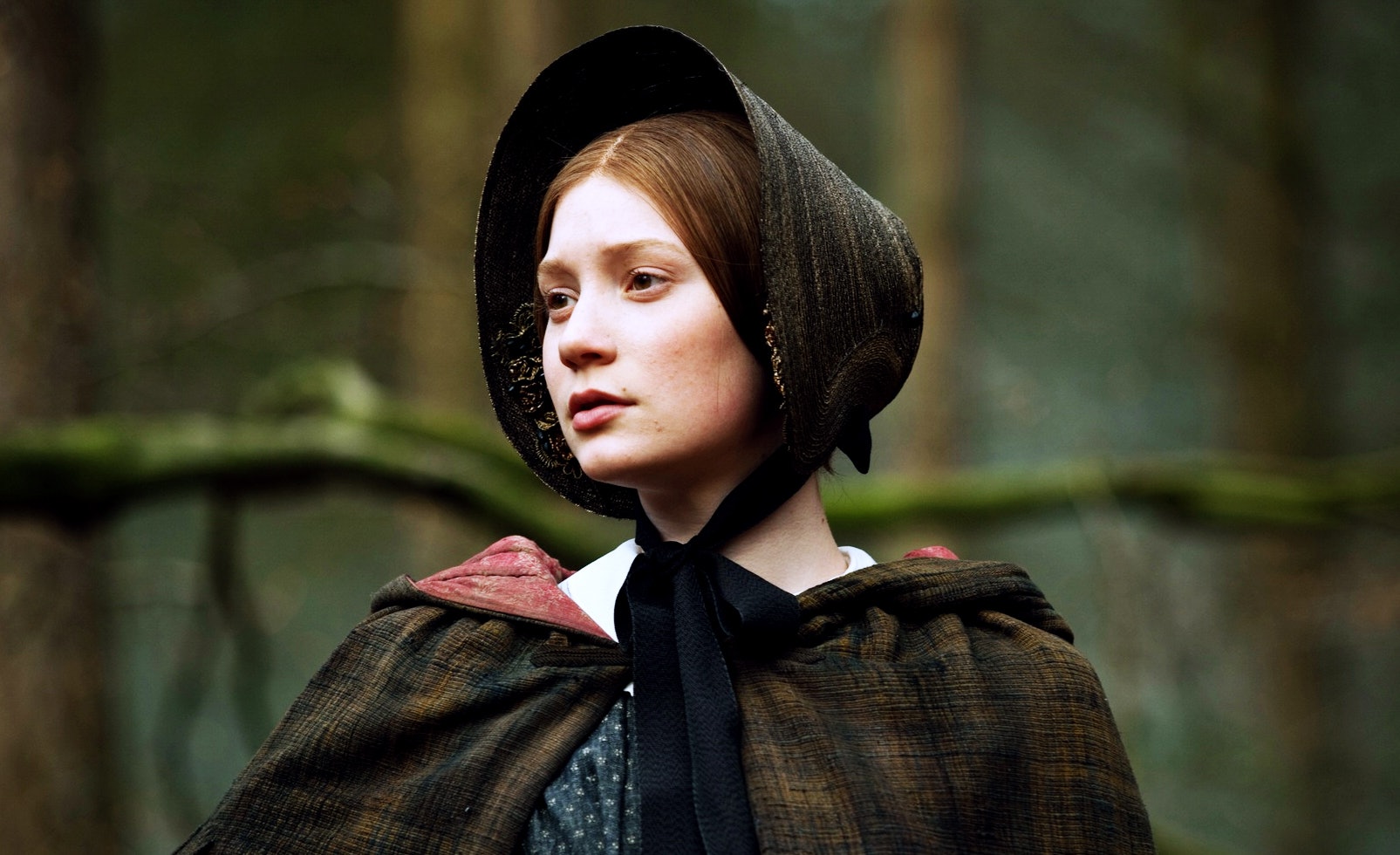“Reader. I married him.” Just
from this line and several more in the book, you can tell that this story and
method of writing is out of its time. With its contemporary style of writing and
wonderful mixture of serious story-telling and scandals, Jane Eyre is truly a
classical gem worth giving a nod to every time feminists parade the streets.
Our tale revolves around the story of a young woman named Jane Eyre, who,
as the first edition of the book would claim, the author of the book as it says
“An Autobiography” in the subtitle. Jane’s story begins with a clear picture of
the abuse our heroine has to go through during her childhood years. Eventually,
she escapes this brutality when she is sent to school, where she encounters a
new set of problems. Because of this, Jane decides to run off and work as a
governess at Thornfield Hall, owned by Edward Rochester; a character of his own
unique standards. They find out that they are similar in a lot of aspects,
disregarding their age differences. While they get closer, Jane notices strange
things in the household, such as maniacal laughter and seemingly spontaneous
combustion of things in the house. However, Jane leaves Thornfield to nurse her
aunt Reed who she learns is already on her deathbed. When she comes back to
Thornfield, Mr. Rochester proposes to her, and she accepts. During their
wedding, however, Richard Mason tells Jane that Mr. Rochester is not an eligible
bachelor. Mr. Rochester’s wife, Bertha Mason, has been kept by Mr. Rochester in
his attic when her mental state went rock bottom. She is also the cause of all
the strange happenings in the house. Displeased by Mr. Rochester’s dishonesty,
she leaves Thornfield again and is taken care of by the Rivers siblings, who
are later revealed to be her cousins. She is almost forced into a marriage with
St. John Rivers when she disembodied voice of Mr. Rochester calling out to her.
She returns to Thornfield and is shocked when the entire place is in shambles.
Bertha Mason burned down Thornfield and killed herself in the process. Mr.
Rochester ends up with several injuries, including a lost arm and his sight.
Jane still marries Mr. Rochester regardless of all these, and they live happily
ever after with their first born.
As I delved
into more research about the book, I learned that it originally had been
sub-titled as an autobiography, which I found odd since the author is not named
Jane Eyre but named Currer Bell, Charlotte Brontë’s pen name. However, in a sense, it may be
considered an autobiography, considering that the recorded events of Charlotte
Brontë’s life are similar to those of Jane Eyre. In a way, it is Charlotte’s
method of telling her readers about her experiences in a society where women
are forced to subdue themselves; when women were not free. The two characters I
found most interesting were Jane Eyre, the heroine, and Bertha Mason, the
alleged crazy-wife. I find them to be perfect representations of how I depict
19th century females were treated during their time. Jane Eyre on
her own is going through a journey of getting to know herself as she fully
embraces what it truly is to be a woman in the Victorian Era. Bertha, however,
is the complete opposite of Jane. While Jane tries her best to learn from the
people around her, Bertha could care less about what people think of her and
just does whatever she can. She may be a look into Jane Eyre’s unsuppressed
feelings from all her encounters with bad events. The story also has a serious
tone to it, however, it keeps the readers hooked by throwing in unconventional
plot twists every now and then. I did find it a bit convenient that the man who
revealed Mr. Rochester’s dark secret is actually the dark secret’s sibling. What I find the least stellar about
this book is the fact that it is a classic and the ending. I do not dislike
classics at all, however, I do find the structure of the sentences and the
language used in general to be quite a hassle for me to get used to. I do find
Jane Eyre’s use of language to be clearer than most classics I’ve read, almost
as if it was written contemporarily. Initially, I thought of the book to be of
the romance genre, but as I read it, I learned that it is much more than that,
especially when I learned that it was claimed as an autobiography in the first
edition. Jane Eyre’s inability to classify itself into just one genre is astonishing
for a novel created in the 18 hundreds. The ending is sad to say, a bit
disappointing. I would have expected that Jane Eyre, finally realizing her own
capabilities as a grown woman would stay away from Rochester’s character, but
she did not, and instead married the suspicious man. However, that may be a
good thing. The book was once again, able to surprise me, albeit in a
disappointing way.
As old as it
may be, Jane Eyre is still a story with its own beautiful gems that can amuse
any reader that will dare to read the book with its old use of language. With a
passionate cast of characters, wonderful use of words for imagery, and a peek
into ye olde patriarchal society,
Jane Eyre is a classic I wouldn’t mind recommending to millennials and the generations
to come.
-Aleya Oliveron, STEM XI-Mendeleev
-Aleya Oliveron, STEM XI-Mendeleev
